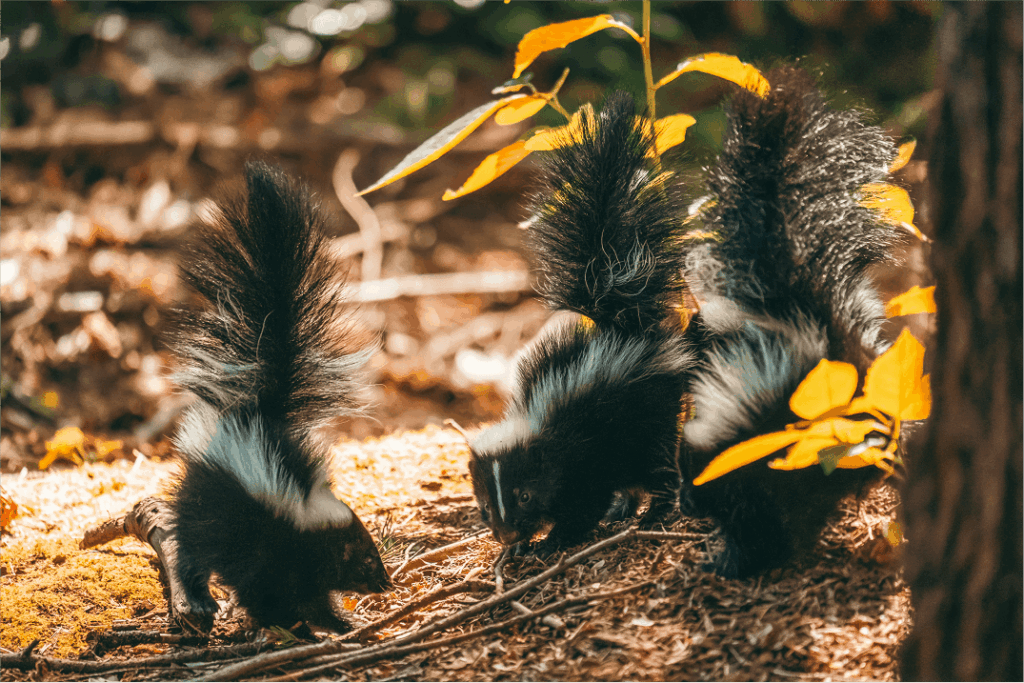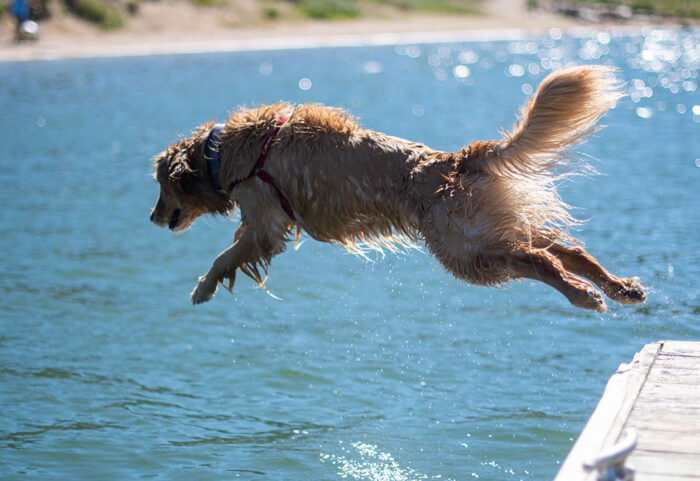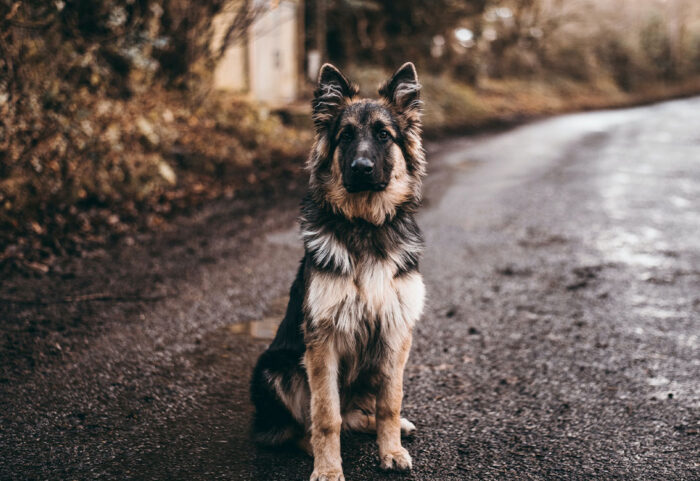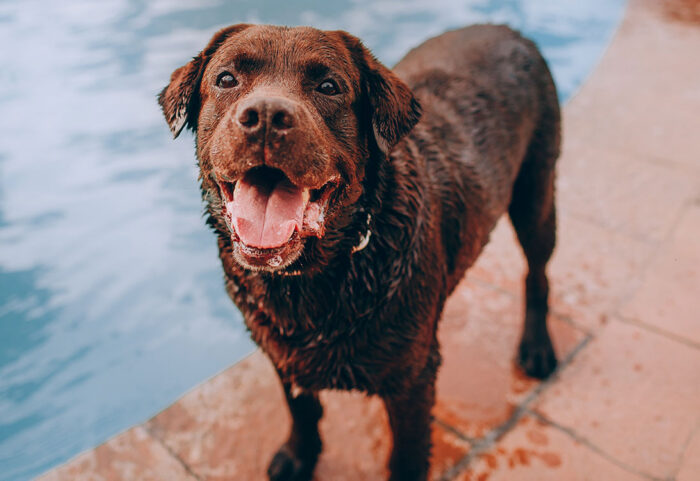Dog Sprayed by a Skunk? Here’s How to Remove the Smell Fast.
Oh no! Your dog was sprayed by a skunk. There’s nothing grosser – or more overwhelming – than the smell of skunk spray. Now imagine if you had it all over you, and that your nose was 40 times better at smelling stuff…
Skunks are most active in warm weather months, especially around dawn and dusk. They can spray up to 15 feet when threatened, which is yet another reason to keep your dog on a leash outdoors.

If your dog is sprayed, you’ve got to act fast. Skunk spray is a yellow, oily secretion made of compounds like thiols and thioacetates that cling to skin and fur. Without quick treatment, the smell can last for weeks.
This guide will walk you through what to do in the first two hours, from assessing your dog’s health to removing the smell and preventing future encounters.
0-30 Minutes: Check for Health Risks
Most of the time, skunk spray is unpleasant but not dangerous. The main concern is when the spray gets into your dog’s eyes, nose, or mouth.
- Eyes: Skunk spray can act like tear gas, causing redness, swelling, and pain.
- Mouth: Dogs often swallow spray since skunks aim for the head. This can cause nausea and vomiting.
What to do:
- Watch for vomiting, drooling, or unusual behavior.
- If symptoms appear or if your dog seems distressed, call your veterinarian or an emergency clinic.
If your dog’s health is stable, you can begin odor removal. Do not rinse with plain water yet, as this makes the smell stronger. Get your dog to a location where you can work to remove the spray from his fur without having to chase him down. A bathtub or backyard is ideal…it will be messy!
Restore Your Pet`s Health at Its Source
Discover the science behind regenerative medicine and how it may support your dog’s
long-term well-being.
30-60 Minutes: Remove the Skunk Spray
Contrary to popular belief, tomato juice does not remove skunk spray, and neither does distilled vinegar. Your absolute best choice for removing skunk smell is an over-the-counter skunk combatant – they sell them at most pet supply stores and drug stores. If you live in an area where skunks are common, it’s not a bad idea to keep some on-hand.
You can make your own skunk odor remover with a few ingredients found in most people’s homes:
- 1 quart 3% hydrogen peroxide
- 1/4 cup baking soda
- 1–2 teaspoons dish detergent
The dish detergent will break down the oil so it can be washed off while the baking soda and peroxide oxidize the substance, making it less odorous.
Instructions:
- Mix all three ingredients together. Use immediately, while it’s still bubbling.
- Wearing rubber gloves, apply the mixture thoroughly to your dog’s coat, massaging it into the skin.
- Avoid contact with the eyes, nose, and mouth.
- Rinse completely with clean water.
Also note that peroxide is bleach! It may bleach particularly dark-furred dogs’ coats a bit, and anything you’re wearing as well.
1 Hour – 2 Hour: Shampoo and Rinse Thoroughly
Once you’ve fully “removed” all the skunk spray from your dog, it’s time to use his regular shampoo to give him one (or two) final passes. Lather him up well, then rinse him off completely. Because of the vigorous washings, your dog’s skin may be a little drier than usual over the next few days. Some dogs will still have a faint odor when they get wet for weeks or months afterward.
If you have any concerns about your dog’s skin, his eyes, his GI system, or any other part of his body affected by the skunk, talk to your vet. This is actually one of the most common problems most vets treat!
And for dogs that seem to have a knack for outdoor misadventures, sometimes the problem isn’t smell at all—it’s sharp cactus spines. If that ever happens, here’s a helpful guide on helping a dog after a run-in with a cactus.


